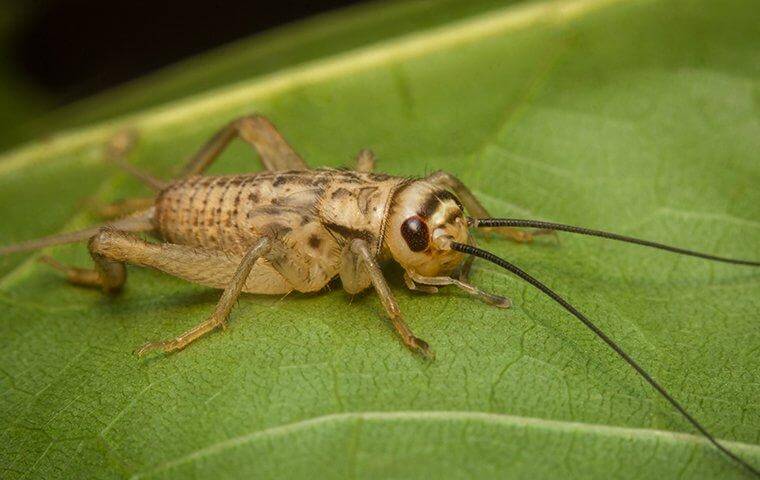
Crickets in Your Home in Olathe, KS? Effective Strategies to Get Them Out
Hearing the constant chirping of crickets inside your home can be more than just annoying, it’s often a sign that these pests have found their way indoors, and they’re not planning to leave without some encouragement. While crickets may seem harmless, they can damage fabrics, paper, and even plants if left unchecked. If you’re dealing with a cricket problem, here’s how you can identify their activity, remove them effectively, and prevent them from returning.
Sometimes, if the infestation is deep and extensive, it might be necessary to seek professional pest control services from companies like Saela Pest Control.
Identifying Cricket Activity in Your Home
Crickets are nocturnal insects, meaning you’re most likely to notice them at night. The most obvious indicator of their presence is their distinctive chirping sound, which male crickets produce to attract mates. If you hear chirping indoors, you likely have one or more crickets in your home.
Aside from the noise, look for other signs of their activity. Crickets are often attracted to warm, damp areas like basements, kitchens, and bathrooms. You might spot them around light fixtures, as they are drawn to light, or in dark, secluded corners where they can hide. Additionally, check for small, irregular holes in fabrics, furniture, or paper, as crickets are known to nibble on these materials.
Natural Methods to Remove Crickets
If you prefer a chemical-free approach, there are several natural remedies you can use to remove crickets from your home:
Vacuum Them Up
Use a vacuum cleaner to remove crickets that you see in your home. This is a simple and immediate way to reduce their numbers without resorting to sprays or traps.
Homemade Cricket Traps
Create a DIY trap using a shallow bowl filled with soapy water. Place the bowl in areas where you’ve noticed cricket activity. The crickets will be attracted to the water and become trapped once they fall in.
Essential Oils
Strong scents like peppermint or lemon can deter crickets. Mix a few drops of essential oil with water in a spray bottle and spray it along windows, doors, and other entry points. Crickets dislike the smell and will be less likely to enter these areas.
Sticky Traps
Sticky glue traps, available at most hardware stores, can effectively catch crickets indoors. Place them along walls or other areas where you’ve seen the insects moving.
Chemical Options for Severe Infestations
For more significant cricket problems, chemical solutions might be necessary. Some common options include:
Cricket-Specific Sprays
Use insecticides labeled for crickets in areas where you’ve noticed their activity. Be sure to follow the manufacturer’s directions to ensure safe and effective use.
Bait Stations
Cricket bait stations contain chemicals that attract and kill crickets. Place them near hiding spots or entry points, but keep them out of reach of pets and children.
Perimeter Treatments
Applying a pesticide spray around the exterior of your home can help prevent crickets from entering in the first place. Treat areas such as window frames, doorways, and the foundation of your house.
Preventing Crickets from Coming Back
Once you’ve dealt with the current infestation, it’s crucial to take preventive measures to avoid another cricket invasion:
Seal Entry Points
Inspect your home for gaps around windows, doors, pipes, and vents. Use caulk, weatherstripping, or mesh screens to seal these openings.
Reduce Indoor Attractants
Crickets are drawn to warmth and moisture, so keep your home dry and well-ventilated. Fix leaky faucets or pipes, and use a dehumidifier in damp areas.
Limit Outdoor Attractants
Crickets often enter homes from outdoor spaces. Reduce clutter like woodpiles, leaves, and garden debris near your house, as these provide shelter for crickets. Additionally, turn off outdoor lights when not in use, as lights can attract them to your home.
Maintain Your Yard
Regularly mow your lawn and keep bushes and shrubs trimmed to remove hiding spots for crickets. The less comfortable your yard is for them, the less likely they are to approach your home.
Conclusion
Getting crickets out of your home doesn’t have to be a mystery. By identifying their presence, implementing effective removal strategies, and taking preventive measures, you can reclaim your indoor space from these noisy pests. Whether you go for natural remedies or chemical treatments, persistence is key to keeping your home cricket-free. A little effort today can save you from sleepless nights of endless chirping tomorrow!
